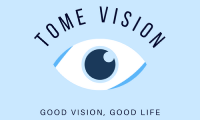Why Our Eyes Get Tired and How to Refresh Them
Introduction
Our eyes are one of the most valuable organs, allowing us to perceive the world around us. However, many of us experience tiredness and discomfort in our eyes, especially after long periods of screen time or mental exertion. This article delves into the reasons behind eye fatigue and provides some effective methods to refresh and revitalize our eyes.
Reasons behind Eye Fatigue
1. Digital Eye Strain: In this modern era, we spend countless hours in front of digital screens, such as computers, smartphones, and tablets. Staring at screens for extended periods can cause digital eye strain, also known as computer vision syndrome. The excessive use of screens leads to dry and irritated eyes, blurred vision, and discomfort.
2. Insufficient Blinking: When we focus on screens or any other visually demanding tasks, we tend to blink less frequently. As a result, our eyes become dry and fatigued. On average, we blink 15-20 times per minute, but when using screens, this rate often decreases to as low as 5-7 times.
3. Poor Lighting Conditions: Inadequate lighting can also contribute to eye fatigue. Excessive brightness or noticeable glare puts strain on our eyes as they struggle to adjust to the varying levels of light. Similarly, working or reading in dimly lit environments can lead to squinting and eye strain.
Refreshing and Revitalizing the Eyes
1. The 20-20-20 Rule: To combat eye fatigue, implement the 20-20-20 rule. Every 20 minutes, take a 20-second break and focus on an object 20 feet away. This exercise helps relax eye muscles, reduces strain, and refreshes the eyes.
2. Blink Regularly: Remind yourself to blink consciously while working or using screens. Setting a timer or using blinking reminder apps ensures that you give your eyes the moisture they need. Frequent blinking lubricates the eyes, preventing dryness and easing eye fatigue.
3. Adjust Screen Settings: Modify the settings of your digital devices to reduce eye strain. Start by adjusting the screen brightness to match the ambient lighting. Additionally, increase the text size and contrast so that your eyes don’t have to work as hard to read the content.
4. Use Proper Lighting: Ensure that your workspace is well-lit, with consistent and ambient lighting. Avoid direct overhead lighting or intense light sources positioned near the screen. Use curtains or blinds to control natural light and reduce screen glare. If needed, add a desk lamp to supplement the lighting.
5. Practice the Palming Technique: Palming is a simple yet effective exercise to relieve eye fatigue. Rub your palms together to generate warmth, then gently place them over your closed eyes. Relax and let the heat soothe your eyes, providing them with a refreshing break from digital screens.
6. Hydrate Your Eyes: Dry eyes exacerbate fatigue, so it’s essential to keep them moisturized. Use lubricating eye drops recommended by an eye care professional to provide instant hydration and relief. Avoid using eye drops designed for redness relief, as they can worsen dryness over time.
7. Get Regular Eye Exams: Routine eye check-ups are crucial for maintaining healthy eyes. Eye examinations help identify and address any underlying eye conditions that may contribute to fatigue. An eye care professional can provide personalized advice and prescribe corrective lenses if necessary.
Conclusion
Being aware of the reasons behind eye fatigue and adopting simple yet effective strategies can significantly reduce discomfort and refresh our eyes. By implementing the mentioned techniques and taking breaks while using screens, we can safeguard our eye health and alleviate the tiredness caused by prolonged screen time. Remember, prioritizing our eye’s well-being is essential to maintain optimal vision and enjoy life to the fullest.
